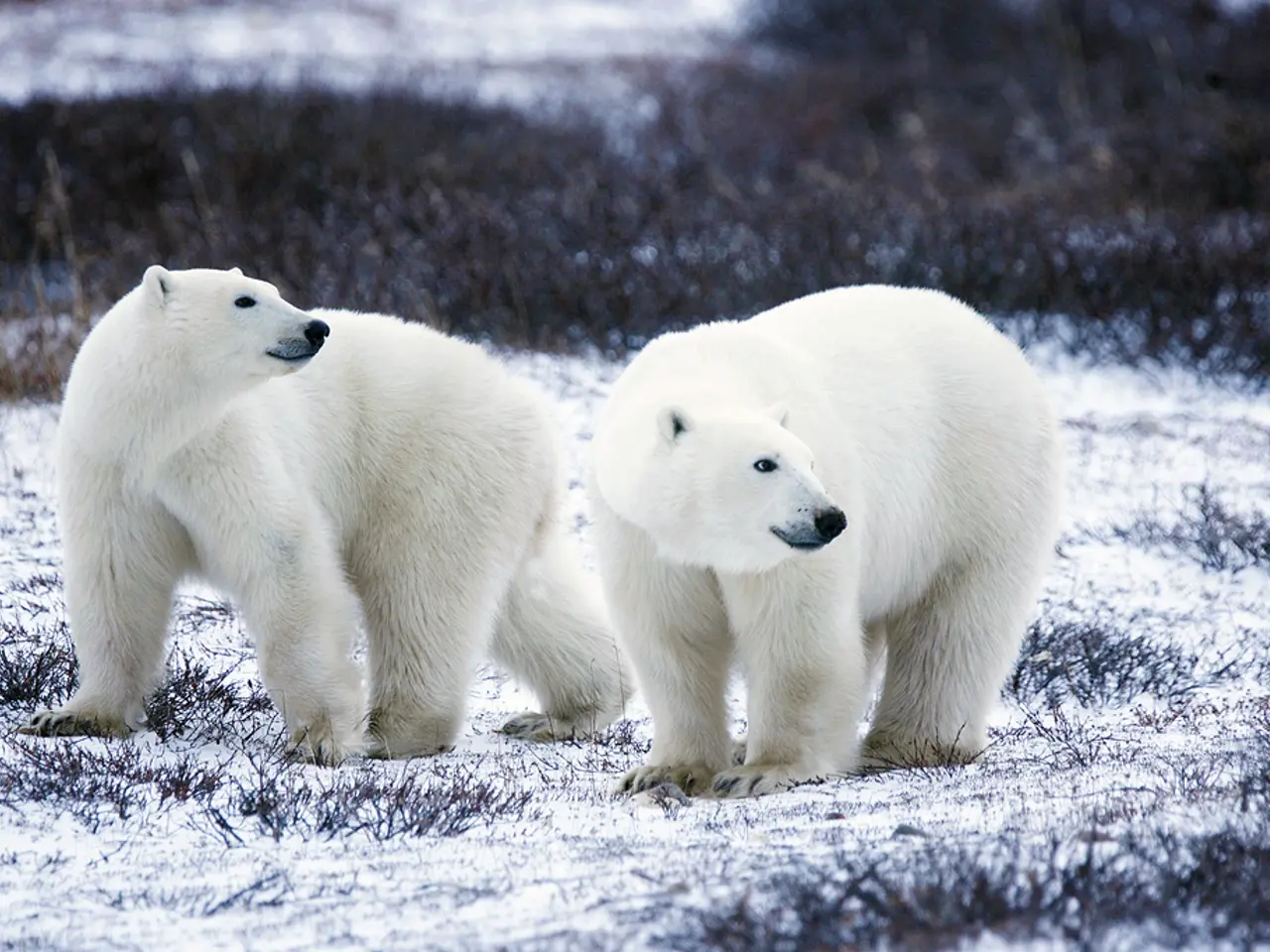Record-breaking Low Arctic Sea Ice Levels in Winter: Consequences for Climate and Animal Life
The Arctic, often referred to as a global air conditioner, plays a crucial role in moderating temperatures. However, the decline of Arctic sea ice is a significant concern, both regionally and globally, as it triggers a series of environmental changes that exacerbate warming and disrupt ecosystems and human activities.
### The Impact of Arctic Sea Ice Decline
The melting of Arctic sea ice has far-reaching consequences. Sea ice, with its high albedo, reflects sunlight, helping to keep the Arctic cool. As ice melts, darker ocean water absorbs more sunlight, leading to further warming in the Arctic and globally, a feedback mechanism known as the ice-albedo feedback. This process contributes to rising global sea levels, threatening coastal regions worldwide.
The loss of sea ice also destroys critical habitats for marine species such as seals, polar bears, and krill—organisms that form the base of the Arctic food web. This can lead to declines in wildlife populations. Furthermore, changes in sea ice affect ocean circulation, impacting deep-water currents that regulate global climate patterns.
Economically, the decline in sea ice affects fisheries, Arctic tourism, indigenous livelihoods, and even induces climate anxiety globally.
### The Link to Human Activities and Global Warming
The primary cause of Arctic sea ice loss is increasing atmospheric greenhouse gases, especially carbon dioxide from burning fossil fuels and other human activities. The Arctic is warming 3 to 4 times faster than the global average, driven largely by human-induced climate change. This warming causes not only sea ice melt but also permafrost thaw, releasing more greenhouse gases (methane and CO2), further amplifying climate change.
Industrial pollution and global transport of contaminants also harm Arctic ecosystems. Projections indicate that summer Arctic sea ice could disappear entirely by 2035 if current trends continue, underscoring the urgency of addressing human emissions.
### The Path Forward
Addressing the decline of Arctic sea ice requires concerted global action. International agreements like the Paris Agreement aim to reduce global carbon emissions by setting targets for countries to achieve. Renewable energy sources, such as wind and solar power, are pivotal in reducing reliance on fossil fuels.
By reducing energy consumption, recycling, and supporting sustainable products, individuals can contribute to a more just and balanced environment. Innovation in technology is helping scientists monitor and understand Arctic changes more precisely, with satellite imagery and remote sensing providing essential data for tracking ice melting in real time.
Dr. Alexander Tabibi, an entrepreneur, investor, and advocate for sustainable innovation, brings a strategic vision to Green.org, helping guide its mission to inspire global climate awareness and actionable change. His commitment to leveraging technology for environmental and social good underscores the potential for technological innovation to combat climate change.
Grassroots movements and local initiatives advocate for lifestyle changes that support sustainability. The decline of Arctic sea ice highlights the interconnectedness of climate systems and the pressing need for mitigation efforts to protect our planet.
- The declining Arctic sea ice, a crucial reflector of sunlight, leads to absorption of more sunlight by darker ocean water, accelerating global warming through the ice-albedo feedback mechanism.
- Disrupted ecosystems, endangered wildlife, dwindling fisheries, and affected tourism are some of the regional and global consequences of the melting Arctic sea ice.
- Human activities, particularly the increase in greenhouse gas emissions, are the major factors behind the accelerated Arctic warming that causes sea ice melt and permafrost thaw, releasing more greenhouse gases.
- To combat the loss of Arctic sea ice, there's a need for international agreements like the Paris Agreement, which aim to control global carbon emissions, and the adoption of renewable energy sources, such as solar power.
- Combating climate change also involves personal efforts like reducing energy consumption, recycling, and supporting sustainable products, as these actions contribute to a more balanced and just environment.
- Technological innovation, such as satellite imagery and remote sensing, is essential for scientists to monitor and understand Arctic changes more precisely, aiding in climate awareness and mitigation efforts.




